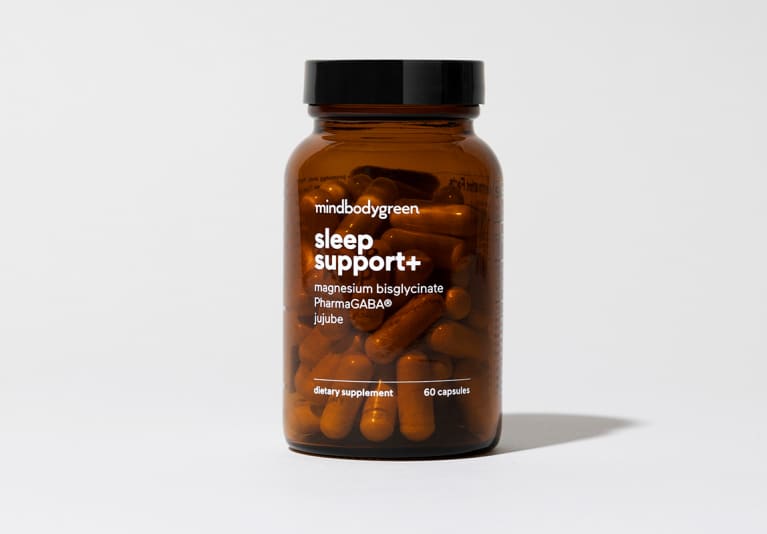
August 21, 2022 — 11:35 AM
When you date someone you like, you can’t get enough of them. You always want to know what they’re doing, who they’re hanging out with, and how much they want to be with you. Even when you do receive validation from them, it still doesn’t feel quite right. If they need time for themselves, you can’t help but take their behavior as a sign of rejection. Even the littlest negative mood shift from them can have you dreaming up the worst-case scenarios.
If these insecurities are a common theme in your dating life, you may be struggling with an anxious preoccupied attachment style.
Understanding attachment theory.
Based on their work studying children and attachment in the 1950s, psychologist Mary Ainsworth and psychiatrist John Bowlby hypothesized our early childhood experiences with our caregivers can create a relational blueprint to how we form and maintain attachments as an adult. They called the concept: the attachment theory.
The attachment theory outlines four attachment styles we all fall into: secure, avoidant, anxious, or fearful-avoidant. While these attachment styles are initially built in childhood, the behaviors are elastic and can shift over time depending on life experiences, relationship patterns, and personal growth.
Here’s an overview of each style:
- Securely attached people had early childhood experiences where their emotions, needs, and desires were consistently met. In response, this creates an attachment style where the individual is emotionally available, comfortable in interdependent relationships, and able to easily state their feelings to others
- Avoidantly attached people had early experiences where they did not consistently receive the care and attention towards their emotions, needs, and desires. In response, this creates an attachment style where the individual has a hyper-independent personality that represses intimacy, pushes others away, and exhibits aloof dating behaviors
- Anxiously attached people had early experiences where their emotions, needs, and desires were unpredictably met by their caregivers. This creates an attachment style where the individual is often doubtful in relationships with a strong craving for connection and constant validation.
- Fearful avoidant attached people had early childhood experiences where caregiving may have been traumatic or otherwise troubled. With a combination of the avoidant and anxious attachment traits, they desperately want to invite people in but fear intimacy at the same time, so their relationships are often full of turmoil.
What is an anxious preoccupied attachment style?
An anxious preoccupied attachment style, otherwise known as an anxious attachment style, describes a person with a sensitive attachment system that intensely desires closeness to the point of “merging” in their romantic relationships.
“This leads the anxiously attached person to often feel uneasy about relationships despite a strong desire to feel intimately connected,” licensed mental health counselor Jor-El Carabello, LMHC, tells mbg. These feelings motivate sometimes unhealthy behaviors that attempt to maintain the relationship, he adds. This can look like being hyper-vigilant for any factors that may threaten the relationship, being uncertain about someone’s feelings towards them, and needing constant reassurance.
People with an anxious preoccupied attachment style rely on their external relationships to fulfill their inner self-worth, leading to an unmoored sense of self that constantly shifts based on their partner’s transient behaviors. As licensed psychotherapist Ling Lam, Ph.D., MFT, explains to mbg, the anxious-preoccupied individual is filled with anxiety about the possibility of rejection and abandonment, so they become preoccupied with seeking out and maintaining relationships to feel safe.
How the anxious preoccupied style develops.
sleep support+
Great relationships start with great sleep.*

According to Lam, attachment styles are influenced by genetics, early attachment experiences, cumulative relational experiences, and traumatic stress.
Evolutionarily speaking, humans brains are born premature, and many areas of the brain are not fully wired just yet. “Early attachment experiences between the young child and the caregivers therefore have a significant impact on the ‘relational software’ in the brain,” Lam explains. “There is a certain threshold for the brain to internalize a secure attachment template, [which develops through] about 30% attunement and the rest [through] natural rupture and repair.” Without proper attunement, the child internalizes an insecure attachment template.
In the case of the anxious preoccupied attachment style, a child who grew up with inconsistent caregiving feels confused about their caregiver’s ability to be there for them. Sometimes they were there, and sometimes they were not. Because they never experienced the complete safety and security they needed to establish a strong self-worth, this manifests into an attachment style full of doubt about their caregiver’s behaviors and love. Without that security, they grow up fearful of someone’s ability to truly be there for them and love them back the way they want.
This causes the anxious-preoccupied person to feel deeply insecure, yet dependent, in their romantic relationships. Later on, they may repeat the same drama of uncertainty as an adult because it secretly reaffirms their negative beliefs about themselves and love.
Common signs of anxious preoccupied attachment.
“You have a deep longing for intimate connections. It’s hard for you to be alone as you feel overwhelmed by a sense of emptiness instead,” Lam says. To fill the void, you look for someone, anyone, as a distraction. If you find yourself dating constantly or going from one relationship to another without much time in between, that can be a red flag. It may signify that you are afraid of being single, so you always have someone in your life — even if they aren’t the healthiest partner.
You fantasize about the perfect partner constantly.
Since you are looking for the one, you may elevate your partners to the point where you aren’t able to see them clearly. Even when you’re dating someone, you may still harbor fantasies about the right person who will “complete” you and give you everything you’re looking for. Yet the emotional availability you’re desiring in a partner is too massive for one person to hold–and so the search never ends.
Low self-esteem and negative self-beliefs.
You only feel whole if someone is confirming your existence in some way. You tend to be critical towards yourself and look for constant approval in others, but it never fully satisfies you. If you harbor fears that you are not lovable or good enough, Lam says this could be an indication that you have an anxious preoccupied attachment style.
You mold yourself to the person you’re dating.
One of the big contributors to an anxious preoccupied attachment style is having a high opinion of other people while having a low opinion of yourself. Without someone else in the picture, it’s hard to know who you are or the person you want to be. Because you want to be the perfect partner to them, you mirror their behaviors and may inadvertently lose yourself in their interests, friend groups, and hobbies.
You engage in protest behaviors.
“You may engage in protective mechanisms like pushing people away because of your anxiety in relationships,” Lam says. “This manifests in a push-pull behavioral dynamic in a relationship, which can be confusing to your partner.” Because your attachment system is wired to notice the tiniest discrepancy in emotional behavior, you feel insecure and needy until your partner re-establishes connection so you feel safe again.
You could be described as “clingy” in relationships.
When you’re in a relationship, the world disappears. Work slips. Your hobbies fade into the background. Your friends complain about your absence. Everything becomes about spending as much time with your partner as possible, which leads to an imbalance in your life. You’re afraid your partner will leave you if they distance themselves in any way, so you want to hang out with them as much as possible.
You need verbal reassurance often.
“You may often seek reassurance even if it’s been provided and is congruent, or aligned, with your partner’s behavior,” Carabello says. “The difficulty trusting the validity or sustainability of the relationship tends to drive this perspective on the relationship.” Your partner might go above and beyond with their validation, but you still feel desperate for more because you aren’t fulfilling your worth on your own.
You display territorial behavior in relationships.
Carabello says anxiously attached partners don’t always present as meek in relationships. Instead, you may come across as jealous or overly protective of your partner and the relationship. If you find yourself barring your partner from seeing particular friends or certain activities because of your insecurities, take note. For example, if they don’t text you back right away, you may find yourself calling them frequently until they pick up, or you withhold and take longer to get back to them when they eventually respond. Or if they go out, you may try to make them jealous by going out to the club with your friends.
Checking your partner’s phone.
If you always want to share locations, know your S.O.’s password, or secretly check their phone behind their back — this is a huge tell. “This is often due to previous relationship trauma of being deceived or cheated on,” Carabello adds. “This can lead to ongoing feelings of insecurity, low self-esteem, and paranoia.”
Dating with an anxious preoccupied style.
If this resonates with you, that’s OK. A 2015 study published by the University of Denver found that 20% of the population had an anxious attachment style. Being able to understand the pattern is the first step in healing.
Here’s what to do next:
Challenge your negative beliefs.
As an anxiously attached dater, your mind is fine-tuned to expect abandonment and rejection from your partner. “It’s helpful to mindfully notice the negative beliefs and challenge them as appropriate,” Lam notes. Plus, he says experiencing safety and security will help you heal. “Over time, you can internalize that sense of security to soothe the fear generated by the negative self-beliefs.”
Tell your partner when you’re feeling distressed.
If your partner needs time alone, instead of asking your partner if they really love you, share what’s happening with you internally. It can be scary to admit you feel like you’re going to be abandoned if they don’t want to hang out with you, but it’ll help prevent the “protest behavior” when you tell your partner why you’re feeling activated. Being able to share your emotions and ask for what you need from your partner creates an opening for vulnerability. You can feel safe in your body knowing you can advocate for yourself, and your partner can tell you the reasoning behind their behavior so you don’t have to second-guess.
You are very perceptive to the relationship, and you may play games to prove your partner really wants to be with you which creates a lot of turmoil in the partnership. Carabello confirms this comes down to the fact that you need a lot of reassurance from your partner. While you’re learning to curb these behaviors, you can ask your partner to practice some patience with you: “Your partner would do good by leading with compassion and patience to behavior that often seems endearing at first, but can become difficult to sit with over time,” he says.
Be consistent and balanced throughout their triggers.
Since you’re used to rockiness in your relationships, you may repeat the same hot and cold behavior in the relationship. Consistency is the key to unlocking the pathway towards a secure attachment style. On both sides, be steady with the relationship and create balance whenever you can. For the person dating someone with an anxious preoccupied attachment style, this can look like calling when you say you’re going to, following through on your commitments, and staying steady in the face of their insecurities.
Reach for transparency instead of reassurance.
Carabello suggests being assertive with your communication style and expressing your emotions to develop a clear understanding of the relationship. Yes, this includes the positives and negatives too. For the person dating someone with an anxious preoccupied attachment style, it’s important to validate and not dismiss their feelings. To help them have more secure attachment, you can share your positive feelings about them often. Although you believe you are sending clear signals that you love them, your anxious-preoccupied partner has an attachment style that tells them otherwise. It could be as simple as proactively checking up on them or telling them you care about them. Even though it feels constant on your side, let them know anyway. The anxiously attached person will appreciate it.
Resolving the issues and healing.
Healing from an attachment style doesn’t happen in isolation. It happens in the community. Carabello says that it takes self-work to move towards a secure attachment style, but that work can be best done within a relationship. These relationships include more than just the romantic ones — it can include your friends, family, pets, and even your therapist.
“Therapists can prove to be powerful allies and sounding boards to work through past relationship hurt and work through problematic ways of coping with relationship anxiety,” he advises. “Working through this in couples, or individual, therapy can be tremendously helpful in learning new skills and strategies for the partnership.”
Overcoming an anxious preoccupied attachment system takes work, but it’ll be good work to rewire your nervous system and achieve security. Don’t be discouraged if it takes time to create a secure attachment to yourself. Remember that you are rewriting fundamental beliefs about yourself that have previously blocked you from having a relationship with yourself and others that’s rooted in unconditional and generous love. Offer yourself all of the tenderness and compassion you should have received as a child, so you can feel empowered to instill healthy habits that give you the relationships you truly want.

